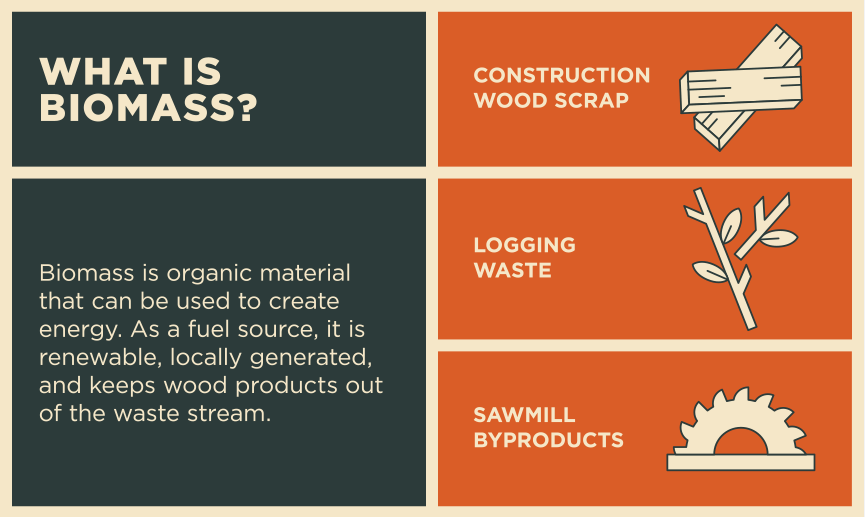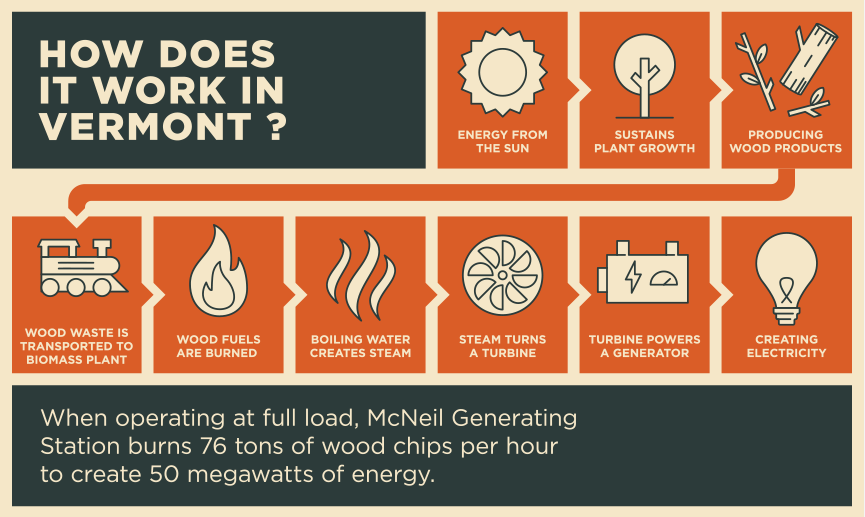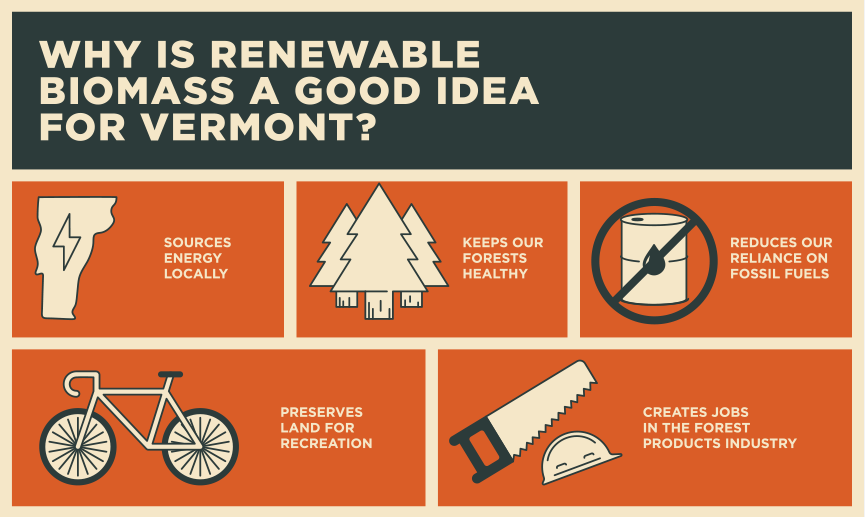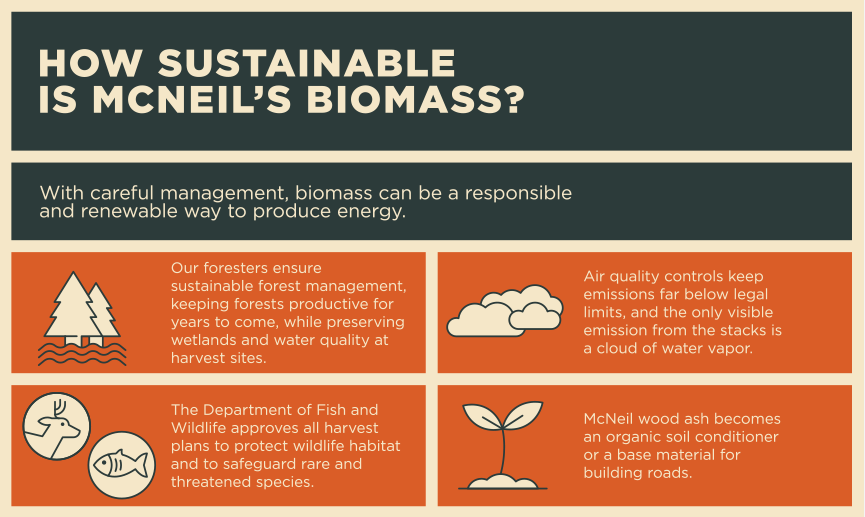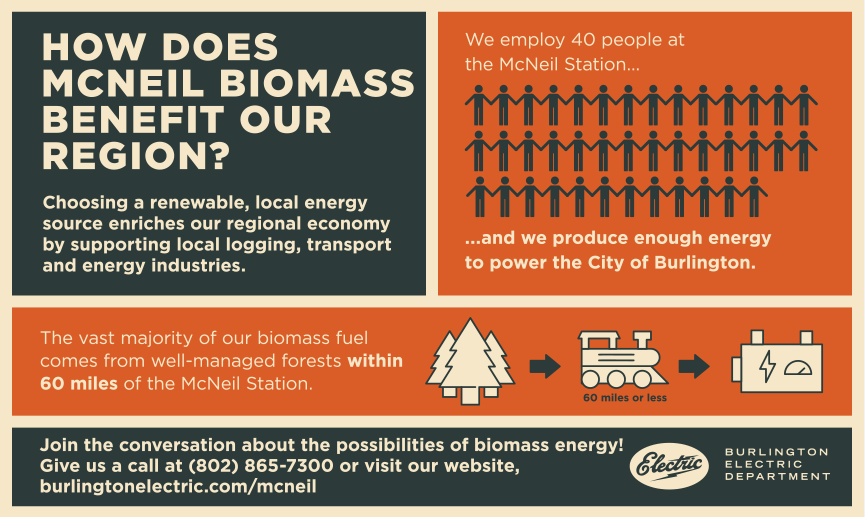Burlington Electric Department’s Forestry Team: (left-to-right) Donald Tobi, Kevin Fink, Seth Clifford, Betsy Lesnikoski
Making A Harvest Plan
Burlington Electric Department is unique in the fact that we employee a staff of four professional licensed foresters. Our foresters develop a harvest plan for each site in Vermont that produces wood for the McNeil Generating Station. Each plan includes data on what is growing on site presently and the landowner’s objective for future growth. A harvest system is prescribed following U.S. Forest Service guidelines.
Additionally, each site is monitored for the presence of critical wildlife habitat including deer yards, bat roost trees, rare, threatened, and endangered species, and wetlands. If present, the harvest plan is modified to protect and promote the success of these habitats. Harvest plans then are sent to Vermont wildlife biologists, who must approve them before any cutting of trees occurs.
Once harvest begins, our foresters monitor the progress of the cutting, ensuring that each harvest plan is followed. Sites are checked for adherence to Vermont Acceptable Management Guidelines, which detail stream and wetland buffers, erosion control measures, stream crossings, and site reclamation after harvests are completed.
McNeil Uses Residues
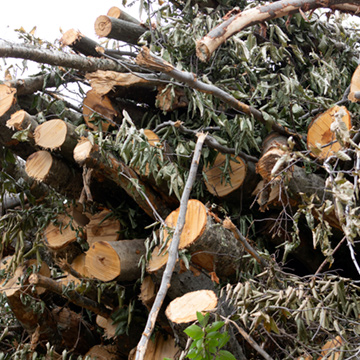
The McNeil Station uses forest residues, wood left over from traditional logging operations. Higher-value products are sorted and sold to other markets such as sawmills, paper companies, and firewood processors. The low-value residues, which do not have another market, then are chipped and used as fuel at McNeil.
The McNeil Plant is a critical outlet for low-grade wood at a time when markets are depressed to historically low levels across the northeast. Without reliable markets for the lowest grade products that come from our managed woodlands, landowners cannot practice the type of sustainable forest management that supports our working lands economy and our rural communities, in addition to providing wildlife habitat, clean water, world class recreational opportunities, and defining the landscape to the place we call home. Sourced from well-managed forests, woody biomass is a critical component in the portfolio of energy sources needed to shift from a fossil fuel economy to one based in natural climate solutions.
-Charlie Hancock
Former owner of Northwoods Forestry
The International Panel on Climate Change (IPCC) 2007 report Mitigation of Climate Change stated, “In the long term, a sustainable forest management strategy aimed at maintaining or increasing forest carbon stocks, while producing an annual sustained yield of timber, fiber or energy from the forest, will generate the largest sustained mitigation benefit.”
“The use of biomass from managed forests can provide numerous environmental benefits. Specifically, forest biomass for energy production can bolster domestic energy production, provide jobs to rural communities, and promote environmental stewardship by improving soil and water quality, reducing wildfire risk, helping to ensure our forests remove carbon from the atmosphere. … Biogenic CO2 emissions resulting from the combustion of biomass from managed forests at stationary sources for energy production are carbon neutral.”
–U.S. Environmental Protection Agency
Reduced Environmental Impact
The most recent data from the Vermont Agency of Natural Resources shows that in 2016 Vermont had total greenhouse gas emissions of 9.76 million metric tons, excluding biomass energy and forest sequestration. When accounting for both biomass energy and net sequestration benefits (all carbon sinks and sources) from our forests, emissions drop to approximately 6 million metric tons. The two largest sources of emissions are fossil fuels — transportation gasoline, and fuel oil and propane use in buildings.
The greenhouse gas inventory report from the Agency of Natural Resources noted that biomass from residues (which McNeil uses) is preferable to non-residue wood. It also found that biomass is better than fossil fuels from a carbon standpoint. Biomass energy provides an economic value for forest properties in Vermont and plays an important role in keeping forests intact (instead of subdivided and developed) so they can continue to sequester emissions.
A recent study of Vermont forests by Dugan et al found that, left alone, the carbon sink in Vermont’s forests is declining. This is due to the aging of Vermont’s forests. The report found that under a business-as-usual model forests will approach zero net emissions by 2050. The authors modeled several forest management scenarios and found a “portfolio” approach resulted in a 12.6% decline in Green House Gas emissions. This approach included extended harvest rotations, use of residues for bioenergy, and increased forest productivity. This scenario is most representative of the all-aged, multi-use management techniques most commonly used in Vermont’s forests.
Increased Forest Growth
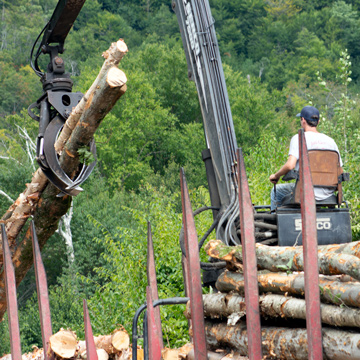
U.S. Forest Service inventory analysis data comparing acres of forest land, number of live trees and volume of live trees show increased growth across all three sectors during the five-year period from 2014 to 2019. In 2019, the annual growth of Vermont forests was three million green tons per year. Total yearly harvests for all forest products was approximately 50% of the annual growth, leaving the other 50% to continue adding to the state’s total above ground stored biomass. In 2019, McNeil wood residue usage accounted for 8% of all Vermont harvests and 4% of the state’s annual growth. These figures show that forests in Vermont are established, strong, healthy, and rigorously growing at a rate far exceeding the rate of all harvesting.
Working with Landowners
The McNeil Station is a proud partner in working with local landowners participating in sustainable forest management. Recent data indicates that 76% of our harvests occurred on lands covered by State-approved Use Value Management Plans, and 95% of our harvests were developed under U.S. Forest Service guidelines. By providing a market for low-grade forest residues, the McNeil Station allows landowners to follow their forest management plans. This produces income for landowners, offsetting the cost of owning forest land. This market helps keep forests as forests, providing wide-scale benefits to the public at large. These benefits include clean air, clean water, enhanced wildlife habitat, and recreational opportunities. Working forests provide the backdrop to Vermont’s tourism industry.
Regional Economic Impact
The McNeil Station has both direct and indirect impacts on Vermont’s economy. The station employs 33 individuals who live and work in the region. The wood supply chain employs an additional 50 individuals. When combined, these jobs add $4.5 million to the regional economy. Each job is accompanied by a multiplier (money spent by individuals in supporting jobs, incomes, and taxes). With this multiplier, the McNeil Station adds $66.5 million to the regional economy yearly. View our Integrated Resource Plan (Appendices) for details.


